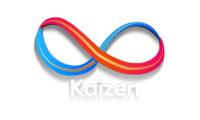What You Need to Know About ISO 9001 Management System
ISO 9001 is an internationally recognised standard for Quality Management Systems (QMS). It is used by organisations to ensure that their products and services meet the highest quality standards. The standard is developed and maintained by the International Organization for Standardization (ISO). ISO 9001 is the most widely adopted QMS standard in the world and is used by millions of organisations worldwide.
The latest version of the standard is ISO 9001:2015, which was released in 2015. This version focuses on risk-based thinking, leadership involvement, and process improvement. It also emphasises customer focus, employee engagement, and continual improvement.
If you’re interested in learning more about this, here are eight things you need to know about ISO 9001.
1. It Is a Voluntary Standard
Organisations can choose to implement ISO 90001 or not. It is not mandatory, although some organisations may require it for certain products or services.
2. It Is a Process-Based Approach
The standard focuses on the processes used to deliver products and services. It does not prescribe specific products or services.
3. It Is Customer-Focused
The standard requires organisations to understand customer needs and expectations and to design and deliver products and services that meet those needs.
4. It Is Flexible
Organisations can tailor the standard to meet their specific needs.
5. It Is Based on 8 Quality Management Principles
These principles are customer focus, leadership, involvement of people, process approach, system approach to management, continual improvement, factual approach to decision making, and mutually beneficial supplier relationships.
6. It Requires Documentation
Organisations that adopt ISO 9001 must document their processes, products, and services in order to demonstrate compliance with the standard. This documentation typically includes quality manuals, procedures, and records.
The quality manual is the top-level document that describes the organisation’s quality management system. It includes a description of the system’s scope, policies, and procedures.
Procedures describe the specific steps that must be followed to carry out a process. They may be generic, covering all processes in the quality management system, or they may be specific to a particular process.
Records are documents that provide evidence that a process has been carried out. They can take many forms, such as inspection reports, test results, or customer complaints.
7. It Requires Continual Improvement
ISO 9001 requires organisation to be proactive. Organisations must review their processes and products and make improvements as necessary.
8. It Is Recognised Worldwide
ISO 9001 is the most widely adopted QMS standard in the world. It is recognised and accepted by customers, suppliers, and governments around the world.
ISO 9001 is based on a number of quality management principles including a strong customer focus, the motivation and involvement of top management, the process approach, and continual improvement.
Organisations that implement ISO 9001 can be certified by an accredited certification body. This certification provides independent confirmation that an organisation has implemented ISO 9001 and has committed to the continual improvement of its QMS.
Conclusion
Implementing ISO 9001 can be a challenge, but the benefits can be significant. It can help organisations improve customer satisfaction, reduce costs, and increase efficiency and productivity.
If you need help with ISO 9001 standards, Kaizen Consulting has got you covered. We offer consulting services on ISO Standards and process improvements. We also provide fixed-price quotations and have a long track of success history. For any questions, don’t hesitate to reach out to us today!




